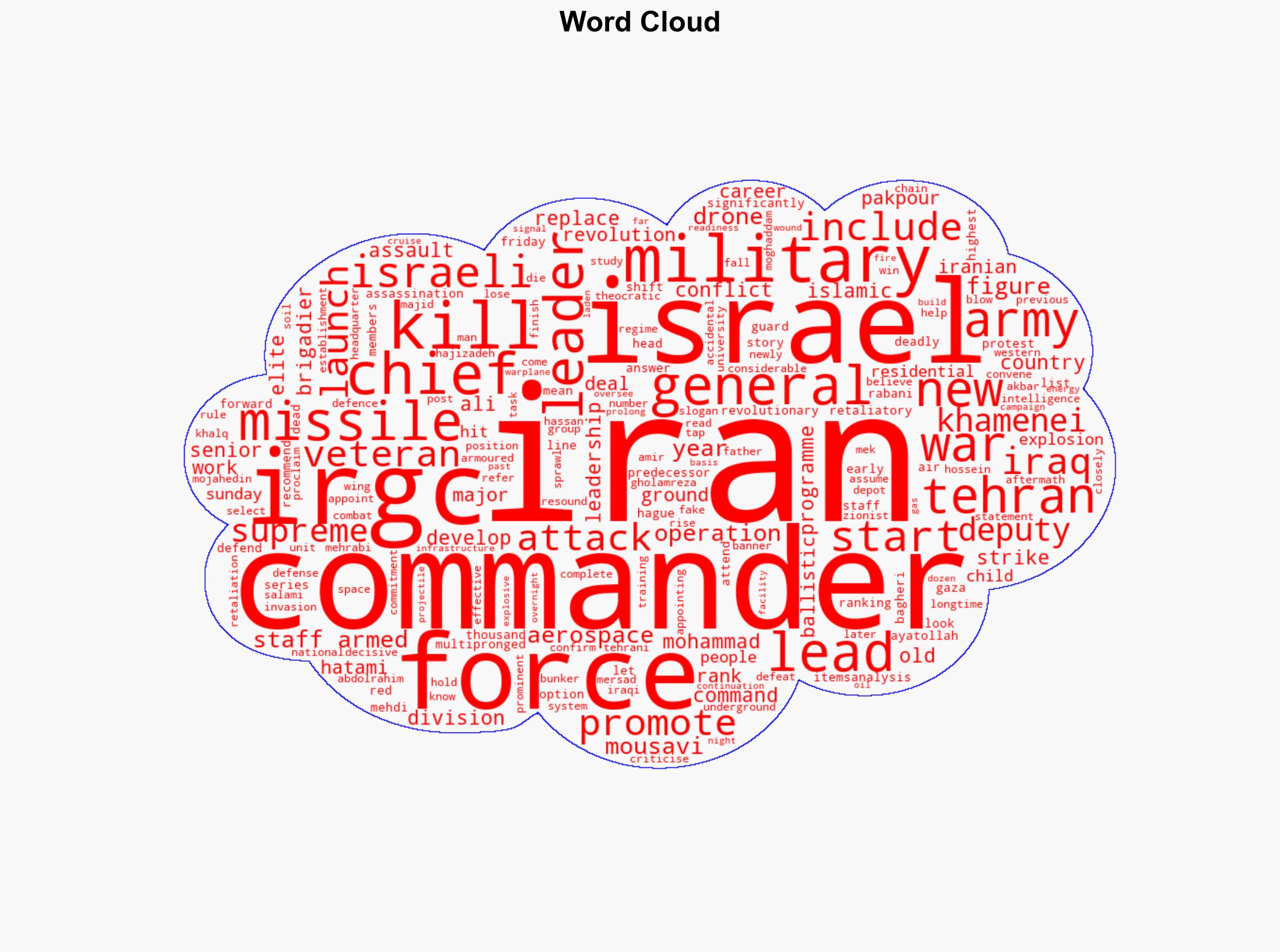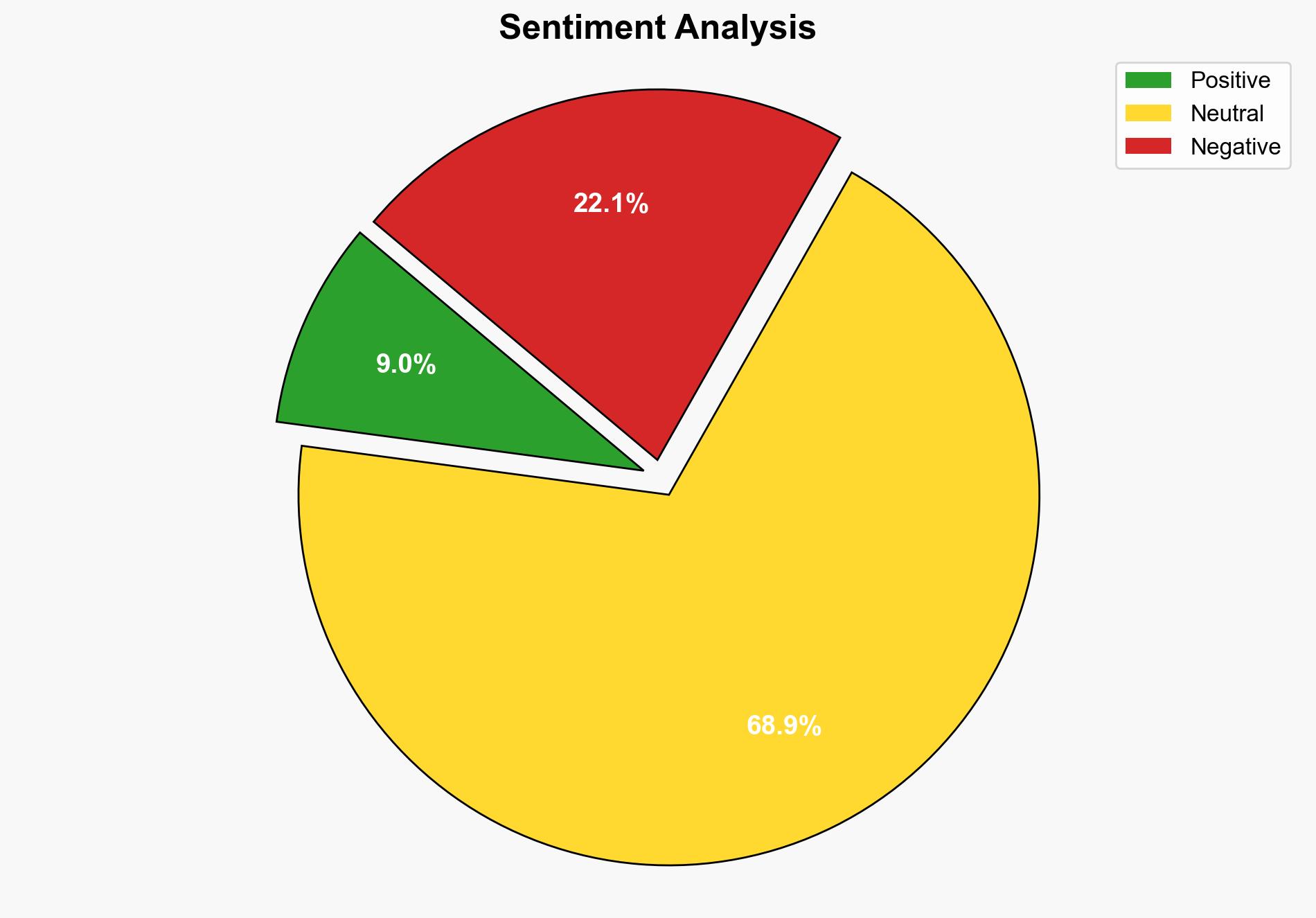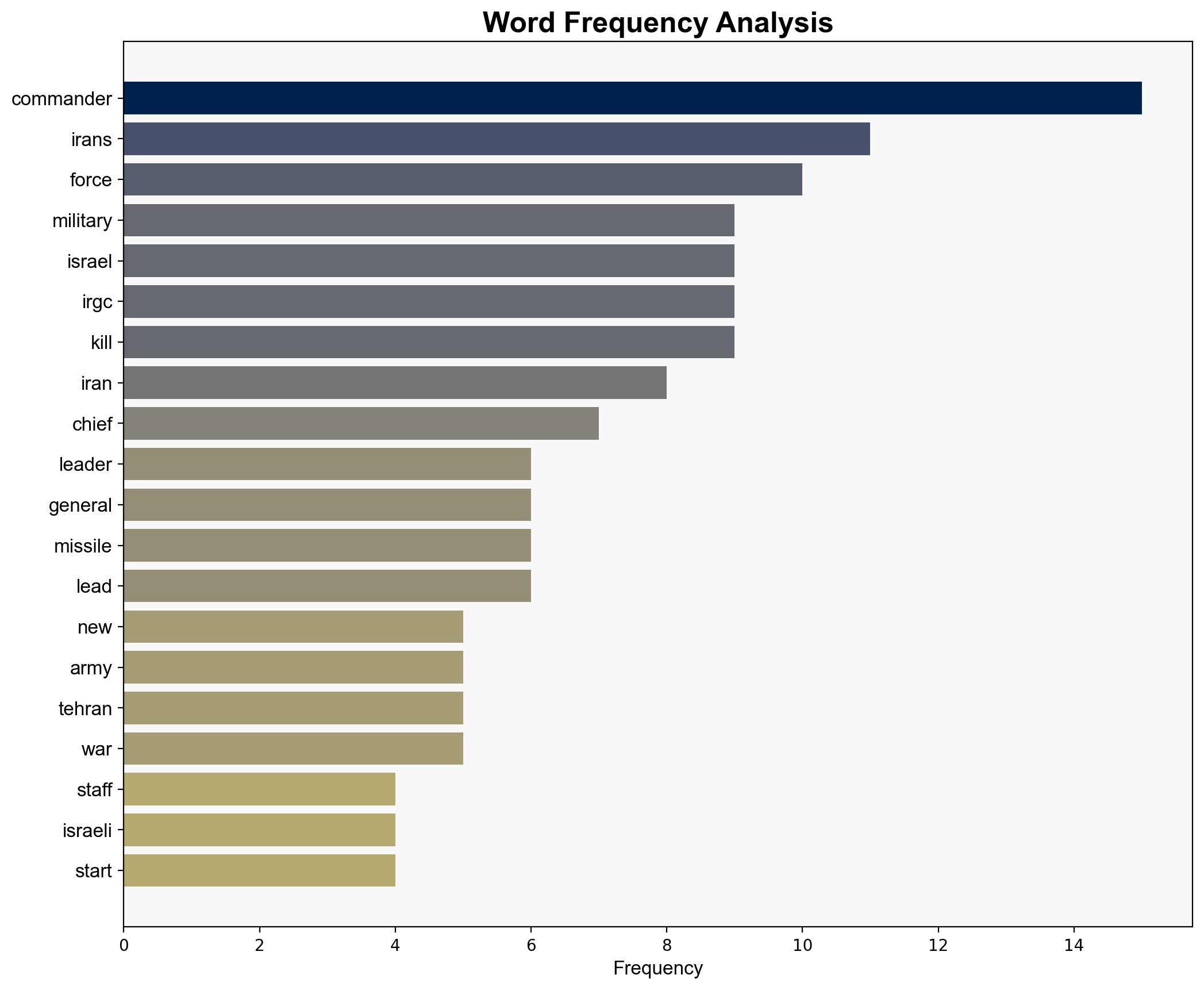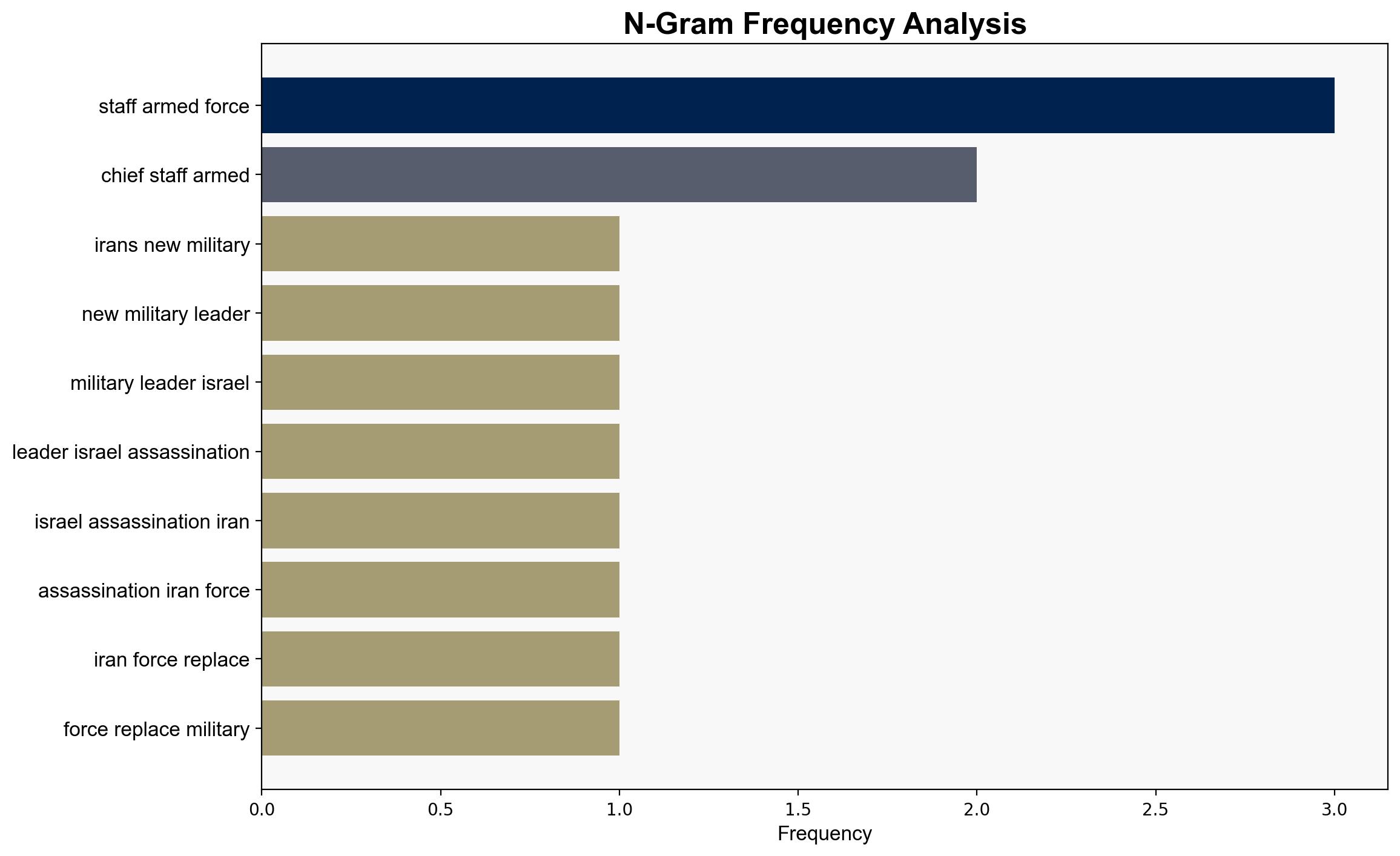Who are Irans new top military leaders after Israels assassinations – Al Jazeera English
Published on: 2025-06-15
Intelligence Report: Who are Iran’s new top military leaders after Israel’s assassinations – Al Jazeera English
1. BLUF (Bottom Line Up Front)
Recent targeted assassinations by Israel have led to significant changes in Iran’s military leadership. The strategic realignment involves experienced commanders with a history of military engagement, potentially altering Iran’s defense posture and retaliatory strategies. This report evaluates the implications of these leadership changes and provides strategic recommendations.
2. Detailed Analysis
The following structured analytic techniques have been applied to ensure methodological consistency:
Cognitive Bias Stress Test
The analysis has been subjected to red teaming to challenge assumptions and expose biases, ensuring a balanced perspective on Iran’s military strategy post-assassinations.
Bayesian Scenario Modeling
Probabilistic forecasting suggests a moderate likelihood of increased military engagements between Iran and Israel, with potential for escalation depending on regional dynamics.
Network Influence Mapping
Mapping reveals a consolidation of power within Iran’s military hierarchy, with new leaders potentially enhancing Iran’s retaliatory capabilities and regional influence.
3. Implications and Strategic Risks
The leadership changes could lead to heightened military tensions in the region, with increased risks of retaliatory strikes by Iran. The shift in command may also impact Iran’s cyber and economic strategies, potentially leading to broader regional instability. The alignment of military and political objectives under new leadership could exacerbate existing geopolitical tensions.
4. Recommendations and Outlook
- Enhance intelligence monitoring of Iran’s military activities to anticipate potential escalations.
- Engage in diplomatic efforts to de-escalate tensions and promote regional stability.
- Scenario-based projections:
- Best Case: Diplomatic interventions lead to de-escalation and stabilization.
- Worst Case: Full-scale military conflict with significant regional impact.
- Most Likely: Continued low-intensity skirmishes with periodic escalations.
5. Key Individuals and Entities
– Abdolrahim Mousavi
– Mohammad Pakpour
– Amir Hatami
– Majid Mousavi
6. Thematic Tags
national security threats, cybersecurity, counter-terrorism, regional focus





